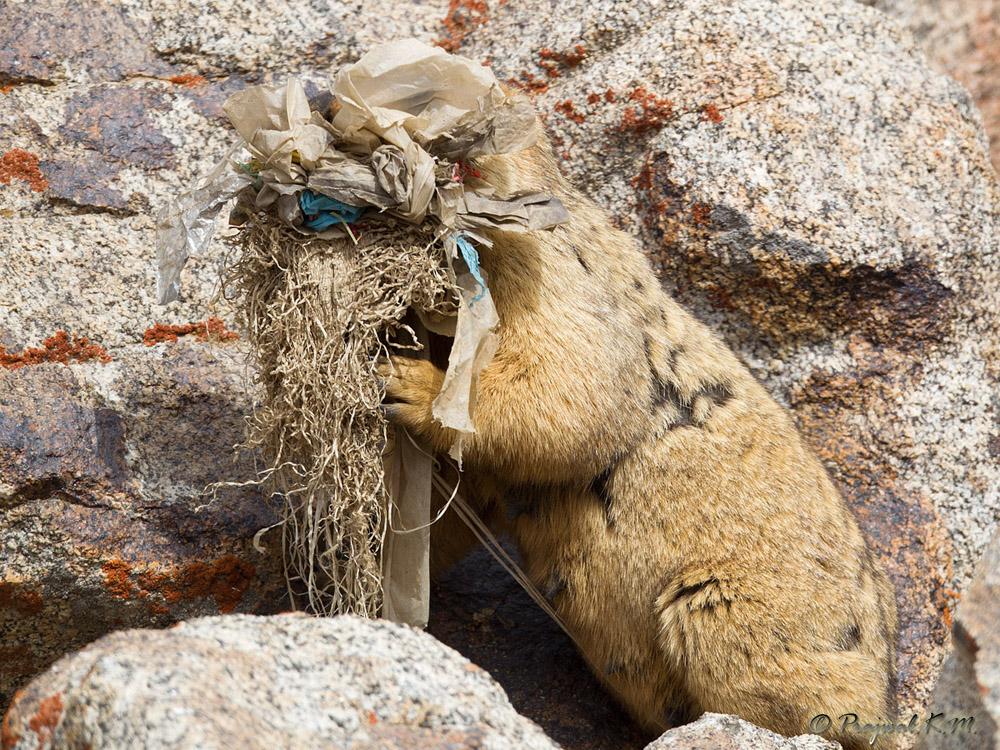
A female Himalayan Marmot (Marmota himalayana) gathering plastic as part of its nesting material. This photograph was taken enroute to Diskit from Leh. Plastic and other litter irresponsibly disposed by careless tourists on these remote roads can create serious problems for wildlife.
Himalayan Marmots live in alpine meadows with very low rainfall, typically inhabiting slopes where soil can be readily excavated (Molur et al. 2005; Smith and Xie 2008). It lives in colonies and excavates unusually deep burrows, which are shared by colony members during hibernation. Litter size is reported to be two to eleven young, after a gestation period of one month.
In addition to the conventional threats to this species like hunting, mortality from domestic predators, habitat disturbance, and overgrazing of its habitat by domestic livestock (Molur et al. 2005), tourism to these remote parts poses a brand new threat.

 CI is a non-profit, non-commercial portal that aims to facilitate wildlife and nature conservation by providing reliable information and the tools needed to campaign effectively.
CI is a non-profit, non-commercial portal that aims to facilitate wildlife and nature conservation by providing reliable information and the tools needed to campaign effectively.
Chosen as 'Picture of the Week'
Unregulated tourism to these remote areas poses a brand new threat to high altitude wildlife in addition to conventional threats like hunting, domestic predators, habitat disturbance, and overgrazing by domestic livestock.